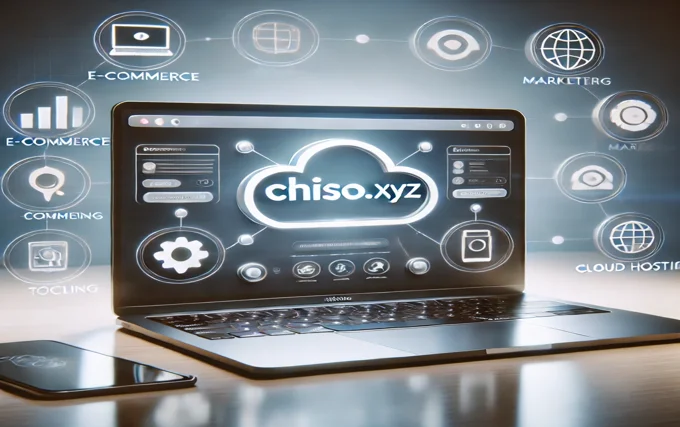Introduction:
In the ever-evolving landscape of education, technology has emerged as a powerful catalyst for change. From enhancing traditional classroom experiences to enabling entirely new modes of learning, educational technology has the potential to unlock unprecedented opportunities for students, educators, and educational institutions alike. In this comprehensive article, we will explore the key aspects of educational technology, delving into the latest trends, tools, and strategies that are shaping the future of learning.
The Advent of Educational Technology
The Historical Evolution of Educational technology has a rich history, dating back to the introduction of simple tools like chalkboards and overhead projectors. As technology has advanced, the education sector has increasingly embraced innovations such as personal computers, the internet, and digital learning platforms, transforming the way we approach teaching and learning.
The Driving Forces Behind the Adoption of Edtech
The growing adoption of educational technology is driven by a convergence of factors, including the need for more engaging and personalized learning experiences, the demand for improved learning outcomes, the desire to bridge geographical barriers, and the push for more efficient and data-driven educational practices.
The Diverse Applications of Edtech Across Educational Sectors
Educational technology has found applications across various educational sectors, from K-12 classrooms and higher education institutions to corporate training programs and lifelong learning initiatives. The versatility of edtech allows for tailored solutions that cater to the unique needs and challenges of different educational environments.
Enhancing the Classroom Experience
Embracing Interactive Whiteboards and Projectors Interactive whiteboards and digital projectors have revolutionized the traditional classroom, enabling teachers to incorporate multimedia content, facilitate collaborative activities, and encourage active student engagement.
Integrating Multimedia and Audiovisual Aids
The use of multimedia elements, such as educational videos, interactive simulations, and virtual reality experiences, has transformed passive learning into an immersive and dynamic process, helping students better understand complex concepts.
Leveraging Learning Management Systems (LMS)
Learning management systems (LMS) have become the backbone of many educational institutions, providing a centralized platform for course delivery, assignment submissions, grading, and student-teacher communication.
Empowering Personalized Learning
Adaptive Learning Platforms and Intelligent Tutoring Systems Adaptive learning platforms and intelligent tutoring systems leverage artificial intelligence and machine learning to analyze student performance and provide personalized, real-time feedback and instruction, catering to the unique needs and learning styles of each individual.
Gamification and Game-Based Learning Approaches
Incorporating game-based elements, such as points, challenges, and rewards, into the learning process can increase student engagement, motivation, and knowledge retention, making the educational experience more enjoyable and effective.
Data-Driven Insights for Tailored Instruction
Educational technology enables the collection and analysis of rich student data, allowing educators to gain valuable insights into learning patterns, identify areas for improvement, and develop targeted interventions to support student success.
Fostering Collaborative Learning
Video Conferencing and Virtual Classrooms Video conferencing tools and virtual classroom platforms enable remote learning, allowing students and teachers to engage in real-time, face-to-face interactions, fostering collaboration and communication across geographical boundaries.
Collaborative Writing and Presentation Tools
Cloud-based applications and platforms that support collaborative writing, document sharing, and presentation creation empower students to work together, contribute ideas, and collectively refine their work.
Social Learning Platforms and Online Communities
Social learning platforms and online communities provide opportunities for students to connect with their peers, share knowledge, ask questions, and engage in peer-to-peer learning, promoting a sense of belonging and a collaborative learning environment.
Transforming Assessment and Evaluation
Online Examinations and Automated Grading Educational technology has enabled the seamless transition to online examinations and assessments, reducing administrative burdens and allowing for efficient, automated grading processes that provide timely feedback to students.
Learning Analytics and Actionable Insights
Data-driven learning analytics tools offer valuable insights into student performance, engagement, and progress, empowering educators to make data-informed decisions, identify areas for improvement, and implement targeted interventions.
Feedback and Formative Assessment Strategies
Edtech solutions facilitate the integration of ongoing formative assessments, enabling educators to provide real-time feedback, monitor student understanding, and adjust their teaching approaches accordingly.
Expanding Access to Education MOOCs (Massive Open Online Courses)
Massive Open Online Courses (MOOCs) have revolutionized the accessibility of education, allowing individuals from around the world to enroll in high-quality courses, often at little to no cost, breaking down geographical and socioeconomic barriers.
Flipped Classrooms and Blended Learning Models
Flipped classroom and blended learning approaches leverage educational technology to shift the traditional lecture-based model, allowing students to engage with course content independently, while dedicating in-class time to interactive learning activities and personalized support.
Mobile Learning and Ubiquitous Access to Education
The proliferation of mobile devices and the increasing availability of educational resources and applications have enabled learners to access educational content anytime, anywhere, empowering them to engage in continuous, on-the-go learning.
Conclusion:
The integration of educational technology has undoubtedly transformed the landscape of learning, opening up new avenues for innovation and progress. As we have explored throughout this comprehensive article, edtech offers a multitude of benefits, from enhancing the classroom experience to empowering personalized learning, fostering collaborative endeavors, revolutionizing assessment and evaluation, and expanding access to education.
By embracing the power of educational technology, educational institutions, educators, and students can unlock unprecedented opportunities for growth, engagement, and success. As we move forward, it is crucial to continuously stay informed about the latest trends, tools, and best practices in edtech, and to be adaptable and agile in our approach to implementation.




